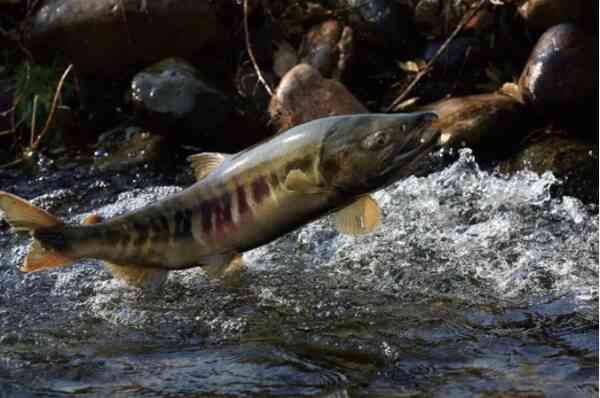Salmon are distributed on both the east and west sides of the Pacific Ocean. In my country, the largest number of salmon are found in the Heilongjiang River, the Wusuli River, and the Songhua River. They are also found in the Tumen River, the Hunchun River, the Mi River, the Suifen River, the Nen River, the Mudan River, and the Dajia River in Taiwan. There are three main types of salmon in my country: common salmon, masu salmon, and humpback salmon.

Salmon is a valuable large economic fish. It is large and fat, with delicious meat. It can be eaten fresh, or made into glue, smoked, or canned. It has a special flavor. Salted fish eggs are the famous "red seeds", which have high nutritional value and enjoy a high reputation in the international market. Among them, the most precious is the Masu salmon. Chum salmon has delicate meat, red color, delicious taste, extremely rich fat content, and high nutritional value. Its eggs are crystal clear, like pearls, rich in phosphate, calcium, and vitamins A and D, and are recognized as a banquet delicacy. The Heilongjiang River and Wusuli River in Jiamusi City, Fuyuan City and Tongjiang City, Heilongjiang Province, China are rich in salmon and are known as the "Hometown of Chinese Salmon".
In China, Chum salmon is an export variety, and its English name is Chum salmon, which is exported from Liaoning and Heilongjiang to Japan.
Chum salmon is not only a large and precious specialty fish in Heilongjiang Province, but also one of the precious freshwater fish in my country. Its meat is delicate, red, delicious, rich in fat, and has a high nutritional value. In addition, it also contains sugars and multiple vitamins. Its eggs are crystal clear, like pearls, rich in phosphate, calcium, and vitamins A and D, and are recognized as a banquet delicacy. It is salted into "salmon roe", which is the "red fish roe" famous in the international market and is very popular among the public in Europe and the United States. The Hezhe people living in Heilongjiang Province also use salmon skin to make leather clothes, long boots, cigarette bags and wallets. The meat, liver, testes and head of salmon are all of medicinal value. Its meat has the effects of tonifying deficiency, strengthening the spleen and stomach, warming the stomach and harmonizing the middle, and can treat edema, weight loss, indigestion, bloating, vomiting acid water, convulsions, swelling and sores. Fish liver can be used to extract cod liver oil. The testis can be used to extract protamine and prepare a variety of protamine preparations, which are suitable for treating reactions caused by excessive injection of heparin; it also has a significant hemostatic effect on certain bleeding diseases (such as acute upper gastrointestinal bleeding, pulmonary hemoptysis, etc.).
The Masu salmon is the southernmost migratory species of the genus Salmon in my country, with a southern limit of 350 degrees north latitude. It has a high adaptability to temperature and is one of the inland domestication objects. It is a precious economic fish with delicate and delicious meat, and is loved by the masses. In recent years, its resources have been sharply reduced and are on the verge of exhaustion. It is found in Heilongjiang and Jilin in China.